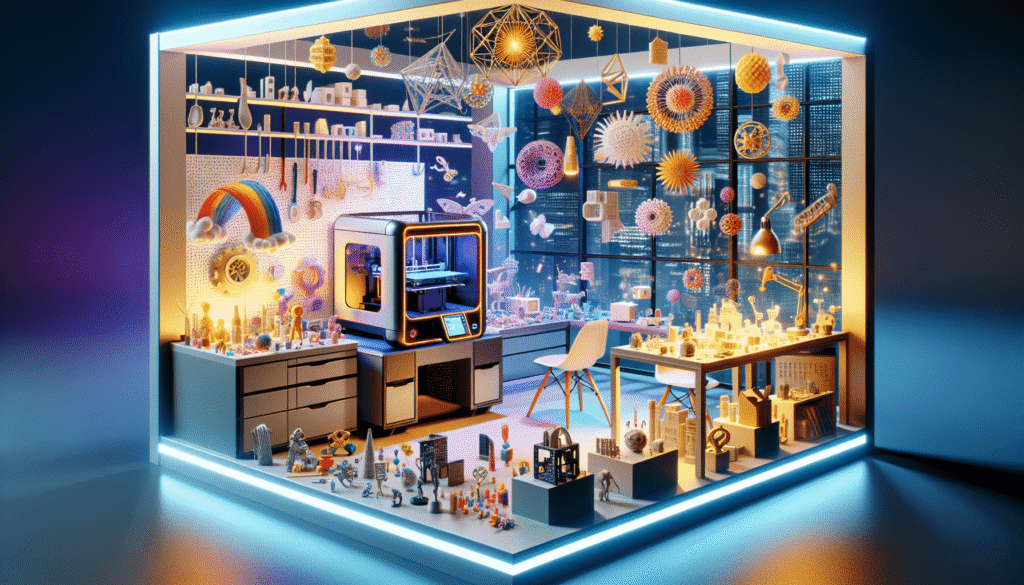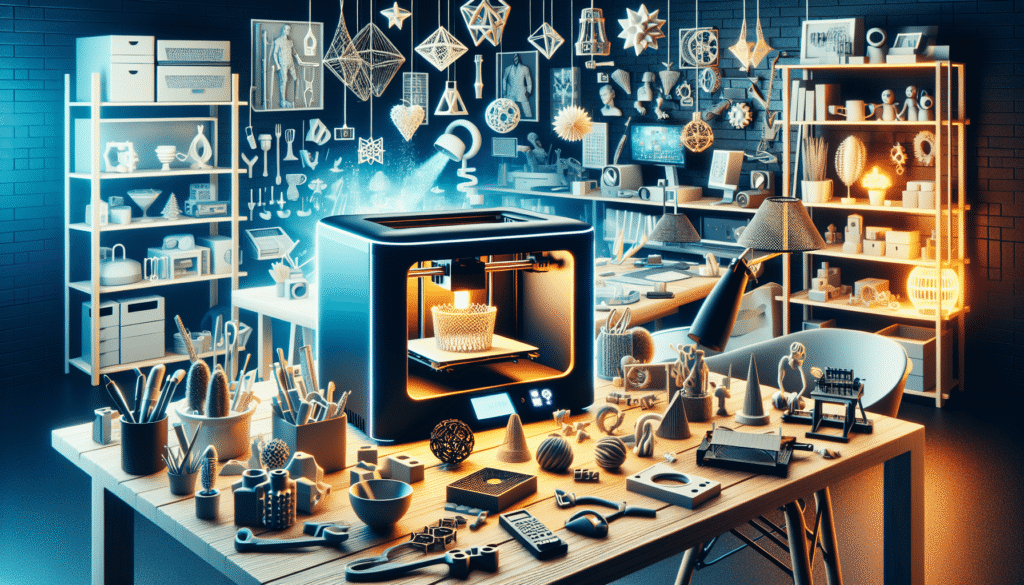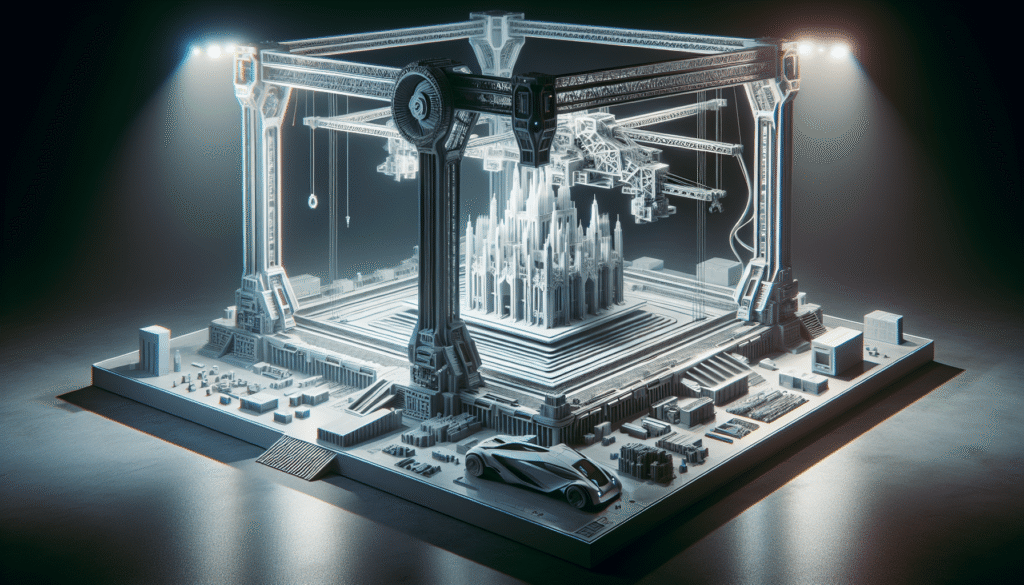Have you ever wondered how technology is reshaping the way we shop and interact with products? The answer might be closer to home than you think, quite literally. The world of retail is witnessing a transformation thanks to consumer 3D printing, and it’s sparking a home manufacturing boom that is rewriting the rulebook of commerce. It’s as mind-bending as it sounds.

The Rise of Consumer 3D Printing
Understanding 3D Printing Technology
I remember the first time I heard about 3D printing. The year was full of hope and unparalleled curiosity—something akin to hearing about a self-cleaning house, the kind that did everything from mopping the floors to folding your laundry. 3D printing, at its essence, is the process of creating a three-dimensional object from a digital file. Think of it like having a tiny factory in your living room.
A Brief Historical Context
Now, while it may feel like 3D printing has just come into existence, it has actually been around since the 1980s. The technology, however, was initially expensive and mostly confined to large corporations and industrial applications. It was a niche that many of us thought was out of reach, much like those extravagant designer shoes that cost more than a month’s rent.
Evolution into the Consumer Market
Fast forward to today, and 3D printers are becoming as common as toasters in certain households. This is, in large part, thanks to the plummeting costs and the increasing availability of user-friendly 3D printers. They’ve gone from being an industrial secret to something your neighbor might use to print a custom phone case as easily as you might bake a cake.
The Impact on Retail
Retail Redefined
You might be asking, “How does a gadget at home change retail?” Well, just imagine ordering online, but instead of waiting for your package to arrive, you simply print what you need. Intriguing, isn’t it? 3D printing offers consumers the option to cut out the middleman—it’s the complete DIY experience brought to tangible goods.
Customization Like Never Before
One of the main appeals of consumer 3D printing is customization. No longer do you have to settle for what’s on the shelf. Let’s say you need a new shoe horn, but you want one with your name etched into it. With 3D printing, that’s not just a possibility, it could become your weekend hobby.
A Shift in Consumer Expectations
There’s something incredibly satisfying about creating something with your own hands—or in this case, your own machine. It changes consumer expectations, creating a demand for more personalized and tailored products. We are moving from a one-size-fits-all world to one that appreciates individuality and innovation.

The Advantages of Home Manufacturing
Cost Efficiency
Think about the typical costs of manufacturing—materials, labor, shipping. Now imagine slashing those. With a 3D printer, you can print objects on demand, eliminating excess inventory and significantly reducing costs, provided you don’t go too wild with exotic materials.
Convenience and Speed
We live in an age of instant gratification, don’t we? 3D printing at home adds another layer of convenience that caters to our fast-paced lives. Need a new set of measuring spoons? Print them out in a couple of hours. It’s like waving a magic wand, only better because it doesn’t require any hocus-pocus.
Challenges in the World of Consumer 3D Printing
Technical Barriers and Learning Curves
Not all fairy tales come without a few bumps, though. While 3D printing is becoming more accessible, there’s still a technical learning curve to consider. Just like learning to use a new gadget or app, it might take a bit of time to master 3D modeling and printing.
Material Limitations
Currently, consumer-grade 3D printers primarily use materials such as PLA and ABS plastic. While these are versatile, they are not yet capable of replicating every type of material found in commercially manufactured products. Imagine wanting to print out a new pair of jeans—plastic just won’t do the trick.
Intellectual Property Concerns
When you think of creating objects from digital files, questions of ownership aren’t far behind. Who owns the design? What happens if you tweak it yourself? The world of 3D printing opens a Pandora’s box of intellectual property issues, much like the early days of online music sharing.
Future Prospects for Consumer 3D Printing
Technological Advancements on the Horizon
To say the future of 3D printing is bright would be an understatement. With rapid advancements in technology, new materials and even multi-material printers are being explored, bringing us closer to replicating a wider variety of objects at home. Imagine a world where you could print clothing or even electronics—talk about living in a sci-fi movie!
The Potential for Eco-Friendly Production
As global consciousness shifts towards sustainability, 3D printing has the potential to play a significant role in reducing our environmental footprint. By minimizing waste and optimizing material usage, 3D printing can be a greener alternative to traditional manufacturing methods.
Expanding into New Industries
It’s not just retail that stands to benefit from this technological revolution. From healthcare to automotive, industries are reimagining how they design and produce goods with the help of 3D printing. Custom prosthetics, vehicle parts, and even entire buildings are being explored through the lens of 3D printing technology.
A New Era of Creativity
At the heart of it all, consumer 3D printing is about unleashing creativity. It empowers individuals to become designers, inventors, and tinkerers. It’s like having your own R&D department right at your kitchen table.
Conclusion
The home manufacturing boom driven by consumer 3D printing is more than just a wave of the future; it’s a shift in how we interact with the world around us. This technology is reshaping retail from the ground up, bringing choice, customization, and convenience directly into our homes. While there are challenges to overcome, the potential benefits are like a dangling carrot, urging us forward into a new era of innovation and personalization. So next time you think about that next shopping mission, remember—you might just create it yourself, from the comfort of your own home. Isn’t that a fascinating thought?


